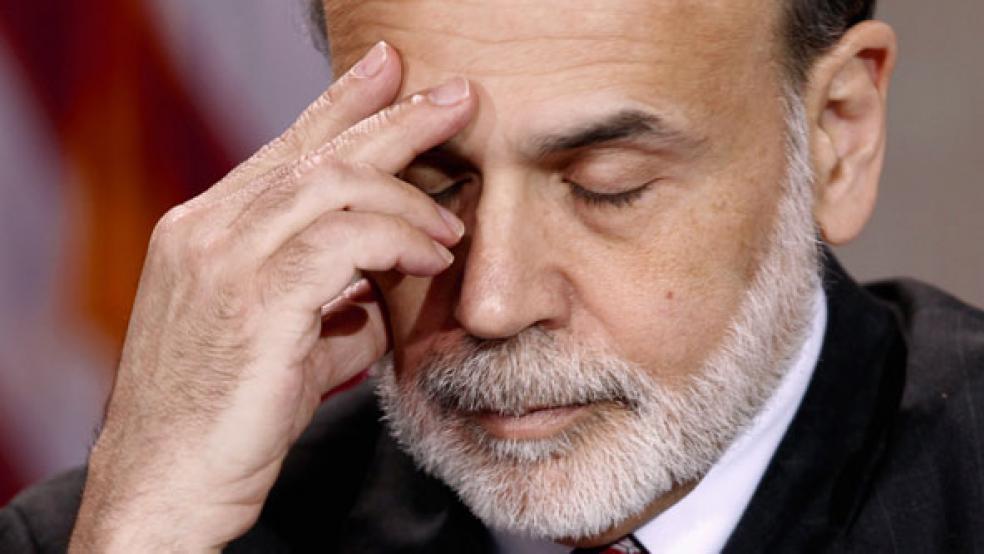Until recently, it seemed unlikely that we were headed for a double-dip recession. We were clearly looking at a very slow recovery, especially for employment, but there was little reason to worry about a second recession.
Now widespread weakness in recent economic data makes a double dip much more likely. In May, just 54,000 jobs were added, auto sales declined significantly, retail sales were sluggish even excluding autos, and growth in manufacturing slowed sharply. Meanwhile, house prices continue to decline to new post-bubble lows, home sales have slowed, claims for unemployment insurance have risen, and consumer sentiment has weakened. Both stimulus spending and QE2 are coming to an end, state and local budgets are still a problem, and corporate bond issuance “fell to its slowest pace of the year.” The fall in investment activity is particularly worrisome because business investment has been growing at near pre-recession rates and has been a key factor in bringing about the moderate output growth we’ve experienced recently. If business investment falls off, it’s hard to see what will replace it.
The recent data is not the only reason I’ve changed my mind about the possibility of a double dip. When the recession started, I was certain we wouldn’t repeat the mistakes of the past. One mistake in particular looms large right now, the deficit reduction and interest rate increases that sent the economy into a tailspin in 1937-38. Many people do not realize that there were two recessions within the Great Depression. The first, which came in 1929, is well known. This recession lasted until 1933, and then the economy began slowly recovering, much like today. As the recovery continued, people began to worry about the budget deficit and the possibility of inflation – again much like today. In response, fiscal authorities began reducing the deficit and monetary authorities raised interest rates, and the result was a second recession in 1937-38. This mistake prolonged the economy’s troubles considerably, and in part was why this became the “Great” Depression.
Fiscal policy makers today seem determined to repeat the mistake of cutting the deficit too soon, the only question at this point is the severity of the error. They also seem determined to make it worse by using the debt ceiling as a bargaining chip in deficit negotiations. If the people pushing the debt ceiling debate to the brink miscalculate, it could create serious economic difficulties.
The Fed’s Federal Open Market Committee begins its two-day meeting Tuesday. QE2, the Fed’s second round of purchases of Treasury securities, is coming to an end, and policymakers must decide what to do next. Should the balance sheet be expanded further with QE3 or kept on hold at QE2 levels? If the balance sheet is kept on hold for now, when should reversal of the quantitative easing policy begin? When will the Fed begin raising interest rates?
The Fed must be very careful not to increase rates before the economy can handle it, but getting the timing right is difficult. There are long and variable lags involved with monetary policy, and the Fed must make policy decisions far in advance of knowing the actual state of the economy. If it moves too soon, it could kill the recovery and even cause a double dip, especially with deficit reduction and spending cuts, troubles in Europe, or other problems we don’t yet know about. If the Fed moves too late, the result could be inflation.
Which should take precedence, economic output or inflation? The damage from a slower recovery or a second recession would be far greater than the damage from temporary outbreak of inflation, so the Fed should be more worried about output than inflation. But that doesn’t appear to be the Fed’s current stance. Inflation hawks on the policy committee have biased Fed policy in the other direction even though there’s very little to suggest an outbreak of inflation is imminent or even likely.
The problem goes beyond the inflation hawks at the Fed. Monetary policy has been increasingly politicized in recent years, and worries that the Ron Pauls in Congress will use an outbreak of inflation as an excuse to take away some of the Fed’s autonomy, and hence its effectiveness, are inhibiting a more aggressive attack on the output and unemployment problems.
The politics of fiscal policy are difficult and at times prohibitive. But the Fed is supposed to be above politics. I wish I felt more confident that the Fed is willing to invoke QE3 or whatever policies are needed to minimize the risks of a double dip. Monetary policy is best hope we have to offset the fiscal insanity in Congress and keep the recovery going. However, at best, I expect the Fed to keep policy on hold for awhile, there’s still the chance that the Fed will tighten prematurely.
And even with the best possible policy from the Fed, the weak economy, problems in Europe, and the determination of fiscal policymakers to make things worse, make it hard to shake the worry that we might be headed toward a second recession.
Related Links:
Key Question: Is the slowdown Temporary? (Calculated Risk)
Consumer Sentiment Slips in June (Reuters)
Investors Fret About a Post-QE2 World (The Wall Street Journal)






